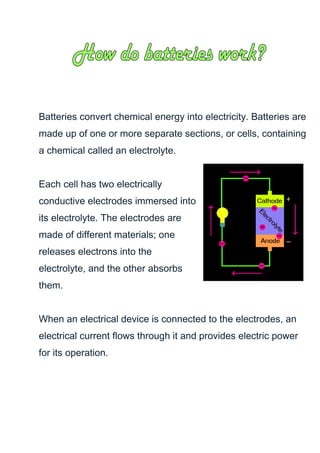Report
Share

More Related Content
What's hot
What's hot (20)
Learn about the three most widely used electronic components

Learn about the three most widely used electronic components
Electricity and magnetism CEIP Los Ángeles 6th graders

Electricity and magnetism CEIP Los Ángeles 6th graders
Viewers also liked (7)
How to Design of Power Management of Hybrid Circuit(Battery and Capacitor) us...

How to Design of Power Management of Hybrid Circuit(Battery and Capacitor) us...
How do batteries work?
- 1. Batteries convert chemical energy into electricity. Batteries are made up of one or more separate sections, or cells, containing a chemical called an electrolyte. Each cell has two electrically conductive electrodes immersed into its electrolyte. The electrodes are made of different materials; one releases electrons into the electrolyte, and the other absorbs them. When an electrical device is connected to the electrodes, an electrical current flows through it and provides electric power for its operation.